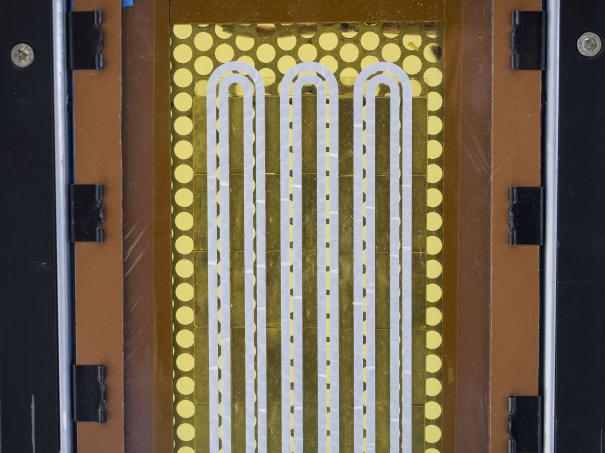Few
Member
- Joined
- Oct 27, 2020
- Messages
- 91
- Likes
- 95
Hi all,
I'm sipping and listening to some fairly tall approximations to line source loudspeakers. Design details can be found at:
https://www.diyaudio.com/community/threads/diy-planar-magnetic-open-baffle-woofer-array.301091/ (long thread)
https://www.homebuilthifi.com/project/18876 (cut to the chase)
I'm writing (perhaps in the wrong forum--I went back and forth) to ask for possible explanations for an observation I have found surprising.
Context: The speakers are positioned in front of a 20 foot wide wall (now fitted with acoustic absorbers not seen in the photos). The rest of the room is about 60 feet long, and the whole environment is sufficiently reflective so that most folks would say "don't bother." Concrete floor. Left wall is all glass. Sheet rock on all walls. The room sounds reflective.
I designed tall dipolar loudspeakers, and positioned them, so that at the listening position, there would be a null aimed at the side-walls, and the floor and ceiling bounces wouldn't be intrusive because the high frequency sources are 8 feet tall in a room with 10 foot ceilings. I'm happy with the result, but a bit confused by the fact that the system sounds more real farther from the loudspeakers (where there is more room-contributed energy) than it does at the designed "sweet spot." When I'm 50 feet away cutting onions, I keep looking up to figure out how John Coltrane got a key to my living room. When I'm in the closer (to the speakers) sweet spot, I enjoy a very good audio experience but it's less convincing than it is where a reflective room contributes more. This is the reverse of what I expected: Best experience in the near-field, tolerable experience elsewhere.
If anyone has insights, maybe I can increase the awesomeness throughout!
Thanks in advance,
Few
I'm sipping and listening to some fairly tall approximations to line source loudspeakers. Design details can be found at:
https://www.diyaudio.com/community/threads/diy-planar-magnetic-open-baffle-woofer-array.301091/ (long thread)
https://www.homebuilthifi.com/project/18876 (cut to the chase)
I'm writing (perhaps in the wrong forum--I went back and forth) to ask for possible explanations for an observation I have found surprising.
Context: The speakers are positioned in front of a 20 foot wide wall (now fitted with acoustic absorbers not seen in the photos). The rest of the room is about 60 feet long, and the whole environment is sufficiently reflective so that most folks would say "don't bother." Concrete floor. Left wall is all glass. Sheet rock on all walls. The room sounds reflective.
I designed tall dipolar loudspeakers, and positioned them, so that at the listening position, there would be a null aimed at the side-walls, and the floor and ceiling bounces wouldn't be intrusive because the high frequency sources are 8 feet tall in a room with 10 foot ceilings. I'm happy with the result, but a bit confused by the fact that the system sounds more real farther from the loudspeakers (where there is more room-contributed energy) than it does at the designed "sweet spot." When I'm 50 feet away cutting onions, I keep looking up to figure out how John Coltrane got a key to my living room. When I'm in the closer (to the speakers) sweet spot, I enjoy a very good audio experience but it's less convincing than it is where a reflective room contributes more. This is the reverse of what I expected: Best experience in the near-field, tolerable experience elsewhere.
If anyone has insights, maybe I can increase the awesomeness throughout!
Thanks in advance,
Few


